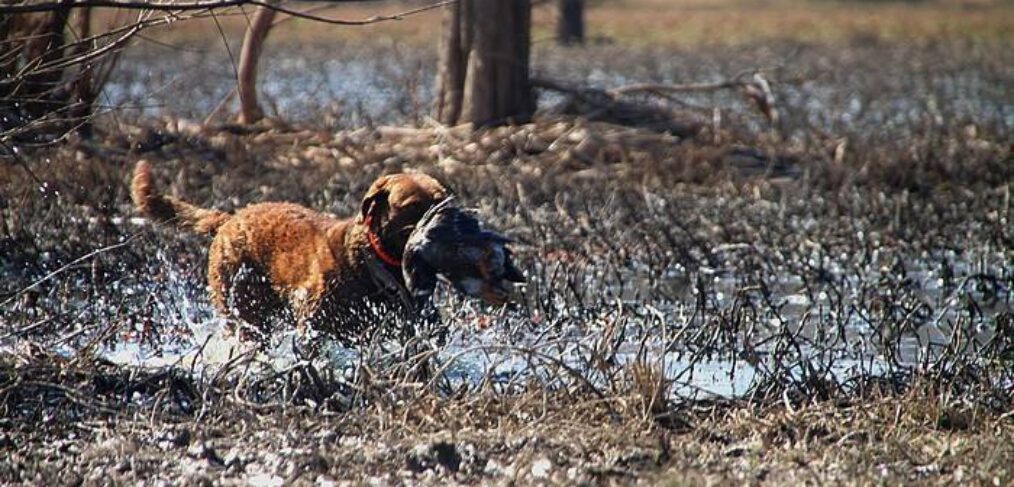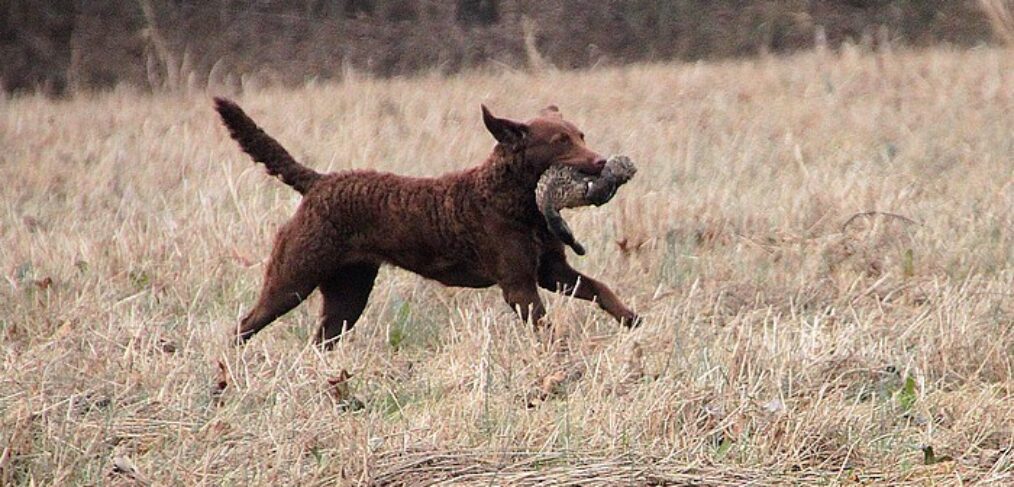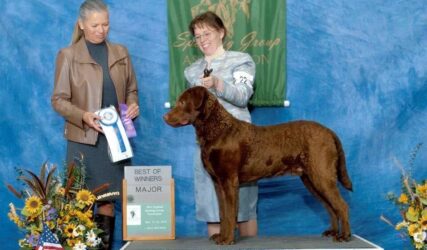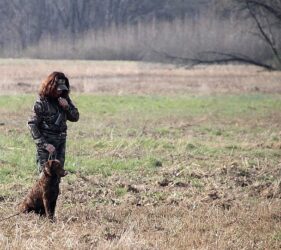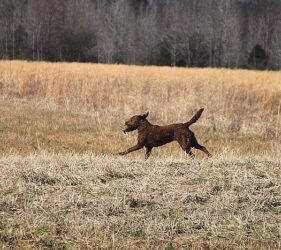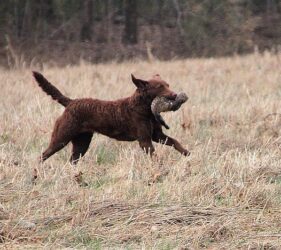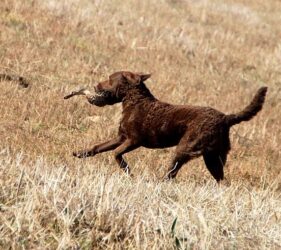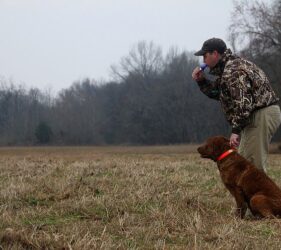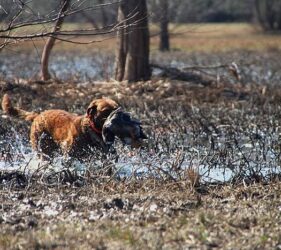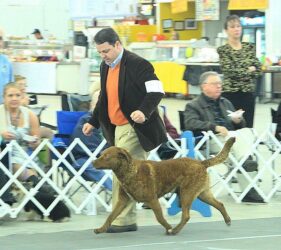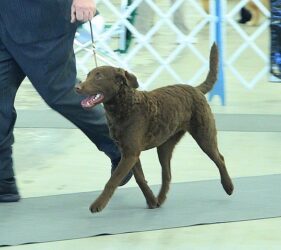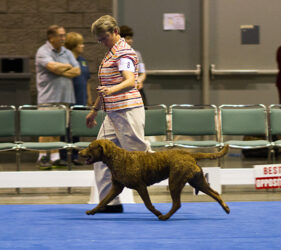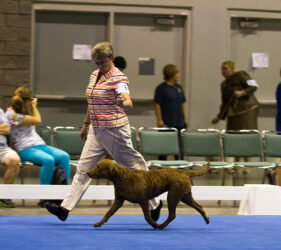
Chesapeake Bay Retriever Puppy in X-Pen
It doesn’t happen often, but every once in a while I am contacted by someone wanting two puppies from a single litter. While there may be some extenuating circumstances in some cases, in 99% of my responses my answer is simply – “no.” This especially holds true for someone who has never owned a Chesapeake Bay Retriever before.
I am sure the inquiring party ends up somewhat disappointed when I tell them that I will not sell two puppies from a single litter to the same home. And I’m sure it doesn’t help matters any when I tell them, I will NOT sell another puppy from one of my litters to that home until the first puppy is AT LEAST a year old. This usually leads to the question, why? Why won’t I sell two puppies under a year of age to the same home?
The Chesapeake Bay Retriever, while a wonderful breed of dog, is not the easiest of breeds for many. Hundreds of pure-bred Chesapeakes end up in shelters and rescues across the United States each year due to lack of socialization, lack of training, lack of exercise and lack of direction/guidance. While I believe all dogs need proper socialization, time and training, this holds especially true for a Chesapeake. Here are a few of the top reasons why I will not sell two puppies to the same home.
- Young puppies tend to bond very closely with each other rather than their owners, to the point where the dog-human relationship becomes secondary to their dog-dog relationship. As the puppies grow, this super-bonding can often manifest in stress-related behaviors (separation anxiety) on the occasion when the dogs do have to be separated.
- Owners often underestimate the time commitment required to properly care for, train and socialize two puppies. And as a result, the puppies often end up untrained and under socialized.
While I mentioned before that I believe all dogs need socialization and training, this is really not an option but rather a necessity for Chesapeake puppies due to their natural guarding instincts and high intelligence. To raise two Chessie puppies together properly is not twice as much work – it’s more like four times as much.
- Due to health reasons associated with early spaying and neutering, I recommend to owners to not spay/neuter their puppies until they are at least a year of age. While many owners think it’d be great to have two littermate puppies (brother/sister) together, they often (more times than not) are not equipped to handle an intact male and female should she come into season between 6 months and a year of age. Many ‘accidental’ litters have happened between siblings at ages far too young (with no health clearances) because they were sold together.
- Lastly, I do not recommend getting two puppies close together in age as that means they grow old at the same time. It’s hard enough losing one dog as they age, let alone two in a very short amount of time.
These are just a few of the reasons why I won’t sell two puppies from the same litter to the same household – especially to someone with no experience raising one Chessie.
I often recommend, if you are new to the breed, to get one puppy and spend the time raising it properly with plenty of socialization and training. Get that dog where you’d like it to be and when it is a year or two old then consider getting a second one. At that time the first puppy will be housebroken, bonded to you, will know basic obedience and will have outgrown the terrible puppy phases (we hope). Not only will this make it easier on the owner (less work raising one puppy than two) but it will also allow the new dog, who has good habits instilled, help train the new puppy.
And, for the record, I very rarely keep two puppies of the same age or from the same litter for myself.


